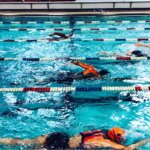It’s the day after your first ironman, and you’re exhausted. Your muscles ache, and your body feels like it’s been hit by a truck. You think about all the effort you put into training for this race and wonder if it was worth it. The good news is that no matter how bad you feel or what kind of shape your body might be in, you can recover from an ironman in just a few days.
Here are some tips for getting back on track:
Stretch and cool down after the race
You should always warm up and stretch before and after your training session, but stretching is especially important after the race since you’ll be sore. Stretching helps with circulation, which can help with muscle soreness, as well as blood clots. Stretching also helps increase flexibility in muscles. The more flexible your muscles are, the less likely they are to get injured while doing things like biking or swimming in an ironman triathlon.
Rehydrate with at least 8 oz of water every hour for 4-6 hours
Rehydrating properly is essential to recovering from an ironman. Dehydration can cause headaches, nausea, muscle cramping and fatigue. In extreme cases it can result in heat exhaustion or heat stroke, especially if you are racing in hot conditions.
Eat a high-carb snack within 30 minutes
After a long race, your body has used up its glycogen stores. This is important because glycogen stores are what act as an energy source for your muscles. When you eat food that contains carbohydrates, the body breaks down that food and uses it to replenish those glycogen stores. So by eating a high-carb snack within 30 minutes of finishing, you’re helping your body replenish those glycogen stores and provide yourself with more energy for your next workout or day of recovery!
Eat a balanced meal about 2 hours later
After a long day, you may not feel like eating. But it’s important to fuel your body with a balanced meal about 2 hours after you cross the finish line. This will give your muscles time to digest food and begin the recovery process.
A good recovery meal should be high in carbohydrates and protein and low in fat. A carbohydrate is any type of sugar or starch that can be converted into glucose (blood sugar). Examples include pasta, rice, breads, fruit, vegetables and legumes (beans). Protein helps repair damaged muscle tissue by providing amino acids which are used to build muscle cells.
Take an ice bath for 20 minutes
Taking an ice bath after a long endurance event is a tried and true method for reducing muscle soreness and speeding recovery. The cold helps to constrict blood vessels, which reduces swelling, while reducing the pain signals your brain receives from the surrounding nerves.
Get a massage
Studies show that massage therapy can help reduce muscle soreness and swelling, increase blood flow to muscles (which helps them recover faster), reduce anxiety levels after stress-inducing events like an intense race or competition—and perhaps most importantly for us endurance athletes—improve sleep quality by increasing healthy sleep hormones such as serotonin and melatonin.
Do light exercise like walking the next day
Light exercise like walking the next day can help you recover faster, but it’s important to listen to your body. If you feel like you’re not ready for light exercise, take another day off. If you feel ready for light exercise, do it!
The most important thing to remember is that this is a recovery process. You can recover from an ironman, but it takes time and patience. While you may feel frustrated with yourself now, just remember that you’ve already accomplished something incredible by completing the race. Soak up all of the positive energy surrounding your accomplishment and use it as fuel for another athletic adventure in the future!
Looking for more tips on race recovery? Contact me today to set up a free coaching consultation!
Train Right, Tri Right!
Coach MJ







